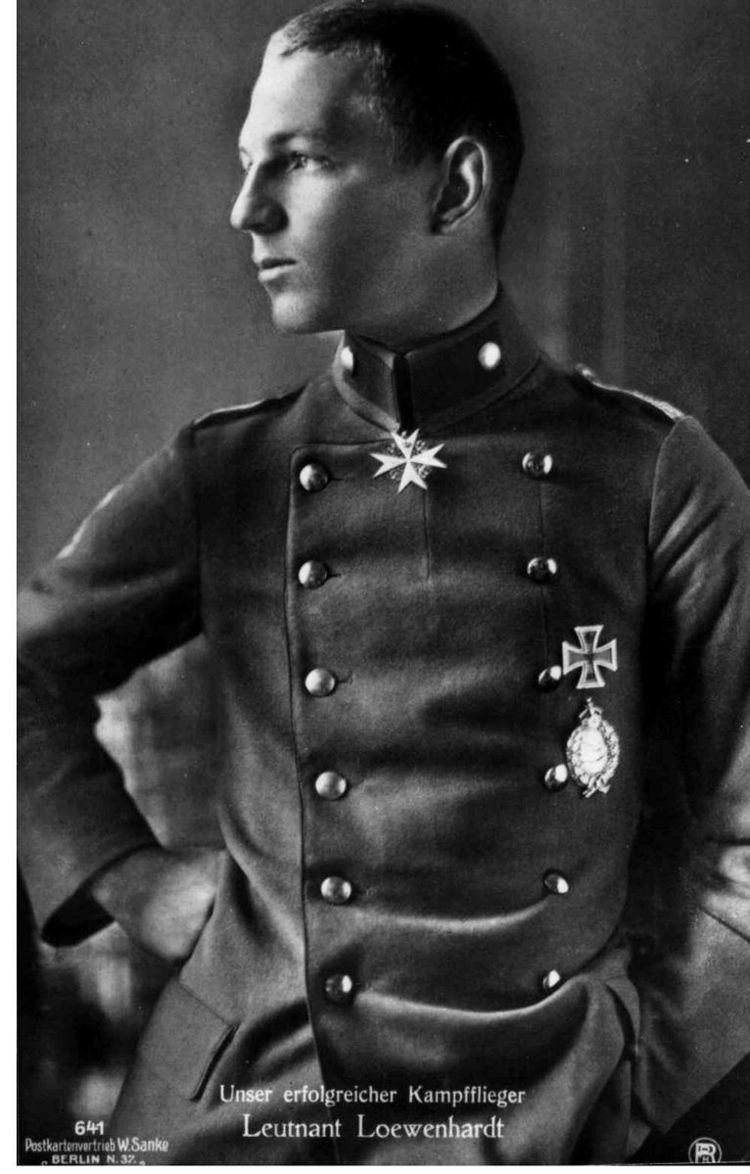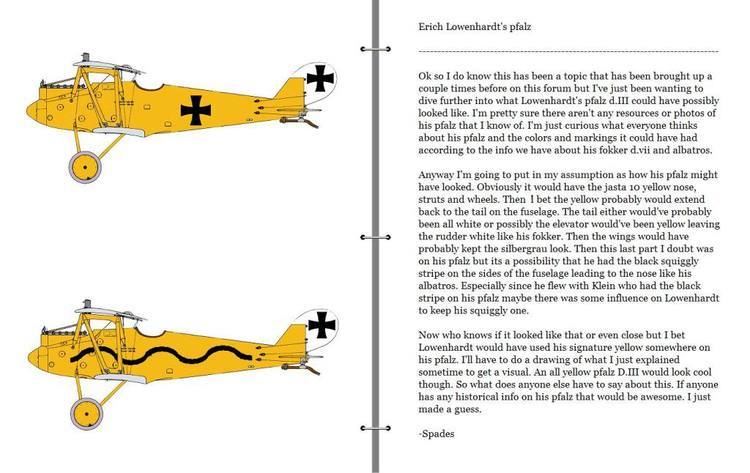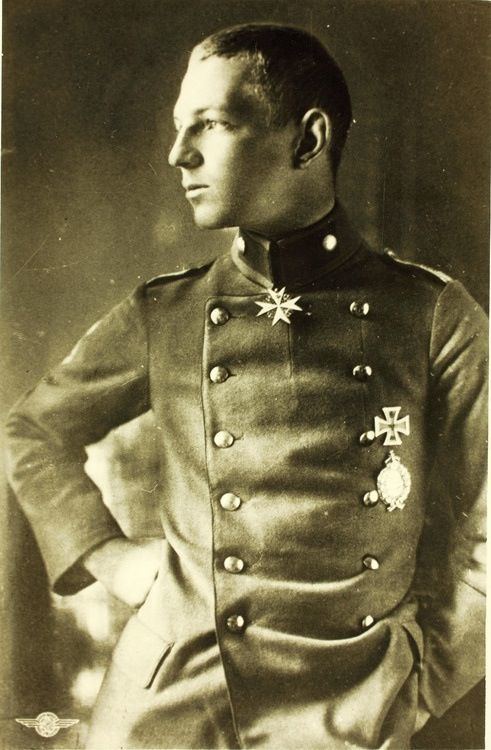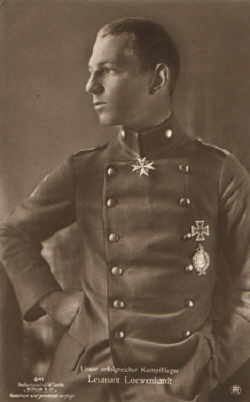Allegiance German Empire Name Erich Lowenhardt Rank Oberleutnant | Years of service 1914–1918 Service/branch Luftstreitkrafte | |
 | ||
Died 10 August 1918 (1918-08-11) (aged 21) †
near Chaulnes, France Unit FA(A) 265,Jagdstaffel 10 | ||
Death of erich lowenhardt
Erich Löwenhardt (7 April 1897 – 10 August 1918) was the 3rd highest German flying ace with 54 victories during the First World War, behind only Manfred von Richthofen and Ernst Udet.
Contents
- Death of erich lowenhardt
- Early life and service
- Aerial service
- Death in action
- Awards and decorations
- References

Early life and service
Löwenhardt was born in Breslau, Silesia, German Empire on 7 April 1897, the son of a doctor. He received his education at a military school in Lichterfelde. He was 17 when hostilities erupted in August 1914 and was assigned to the German Army's Infantry Regiment Nr. 141; he saw infantry action on the Eastern Front with them. Young Löwenhardt was wounded near Łódź but remained on duty as standard bearer for his regiment as it fought in the Battle of Tannenberg. As reward for his courage, on 2 October 1914 he was commissioned. On 30 October he was both wounded and decorated with the Iron Cross Second Class. After convalescing, he returned to his unit in the Carpathians. In early 1915 he received the Iron Cross 1st Class for saving the lives of five wounded men. Löwenhardt then transferred to the Alpine Corps on the Italian Front. However, he fell ill and was invalided from service as unfit for duty.
Aerial service

After five months' recuperation, Löwenhardt volunteered for the Imperial German Army Air Service and qualified as an aerial observer. He then completed pilot training in 1916. Service in two-seaters with Flieger-Abteilung (Artillerie) (Flier Detachment (Artillery)) 265 followed. In January 1917, he underwent conversion training for fighters. He joined a fighter squadron, Jagdstaffel 10 in March 1917. On 24 March 1917, Löwenhardt scored his first confirmed aerial victory, destroying an enemy observation balloon over Recicourt.

Löwenhardt was an aggressive, skilled fighter whose score grew steadily. During this period, he flew Albatros and Pfalz planes. By the end of September he was an ace. He survived a forced landing on 20 September with a minor wound; the next day, he shot down his fifth victim. He posted two more claims in October, one of which was confirmed. On 6 November, his aircraft's lower wing was damaged during combat over Winkel Saint Eloi at 0830 hours, a dud antiaircraft shell smashing his left wingtip without exploding. Löwenhardt pulled his craft out of the resulting spin at 15 meters altitude, wheels down, and bounced into a tumbling wreck. He exited the wreckage shaken but otherwise unharmed. On 30 November 1917, he closed out his year with his eighth confirmed victory; he was credited with four balloons and four airplanes.

Löwenhardt scored two more victims in January 1918: a balloon and a Bristol F.2 Fighter. In March, he added five more. On 1 April, just before his 21st birthday, he was appointed to command Jasta 10. The next month, Jasta 10 re-equipped with new Fokker D.VIIs. Löwenhardt continued to score; on 10 May, he destroyed an observation balloon for his 20th victory and became eligible for the Pour le Merite. The next day, he was awarded the Knight's Cross with Swords of the House Order of Hohenzollern; he also received the Austro-Hungarian Empire's Military Merit Cross. The Pour le Merite (commonly called the Blue Max) came on 31 May 1918, when Löwenhardt's tally had reached 24.

By now, Löwenhardt was locked into an "ace race" with Ernst Udet and Lothar von Richthofen for the honor of being the top scoring ace in their fighter wing. The rivalry between Löwenhardt and the younger Richthofen was a friendly one, as they often flew as wingmen. Jasta 10 belonged to The Flying Circus, and when the wing commander's spot came open on 29 June 1918, Oberleutnant Löwenhardt was tapped for temporary command of it. By then, his tally stood at 27. When he surrendered the JG I command on 6 July, it had risen to 34. By the end of July 1918, Löwenhardt's total was 48: 9 balloons and 39 airplanes.
Death in action

On 8 August, the Allied Forces launched the war's final offensive against the Germans. The British Royal Air Force led the assault, and Löwenhardt downed three of their airplanes. On the 9th, he shot down two more. On the 10th, flying despite a badly sprained ankle, Löwenhardt launched his yellow Fokker D.VII on a mid-day sortie leading a patrol heavily weighted with rookie pilots. He encountered No. 56 Squadron RAF and shot down a Royal Aircraft Factory SE.5a over Chaulnes, France at 1215 hours for his 54th victory. In the aftermath of the combat, he collided with another German pilot, Leutnant Alfred Wenz from Jasta 11. Löwenhardt's Fokker's landing gear slammed the upper right wing on Wenz's D.VII. Both pilots' planes were equipped with parachutes and both pilots bailed out. Erich Löwenhardt's chute failed to open, and the fall killed him.
